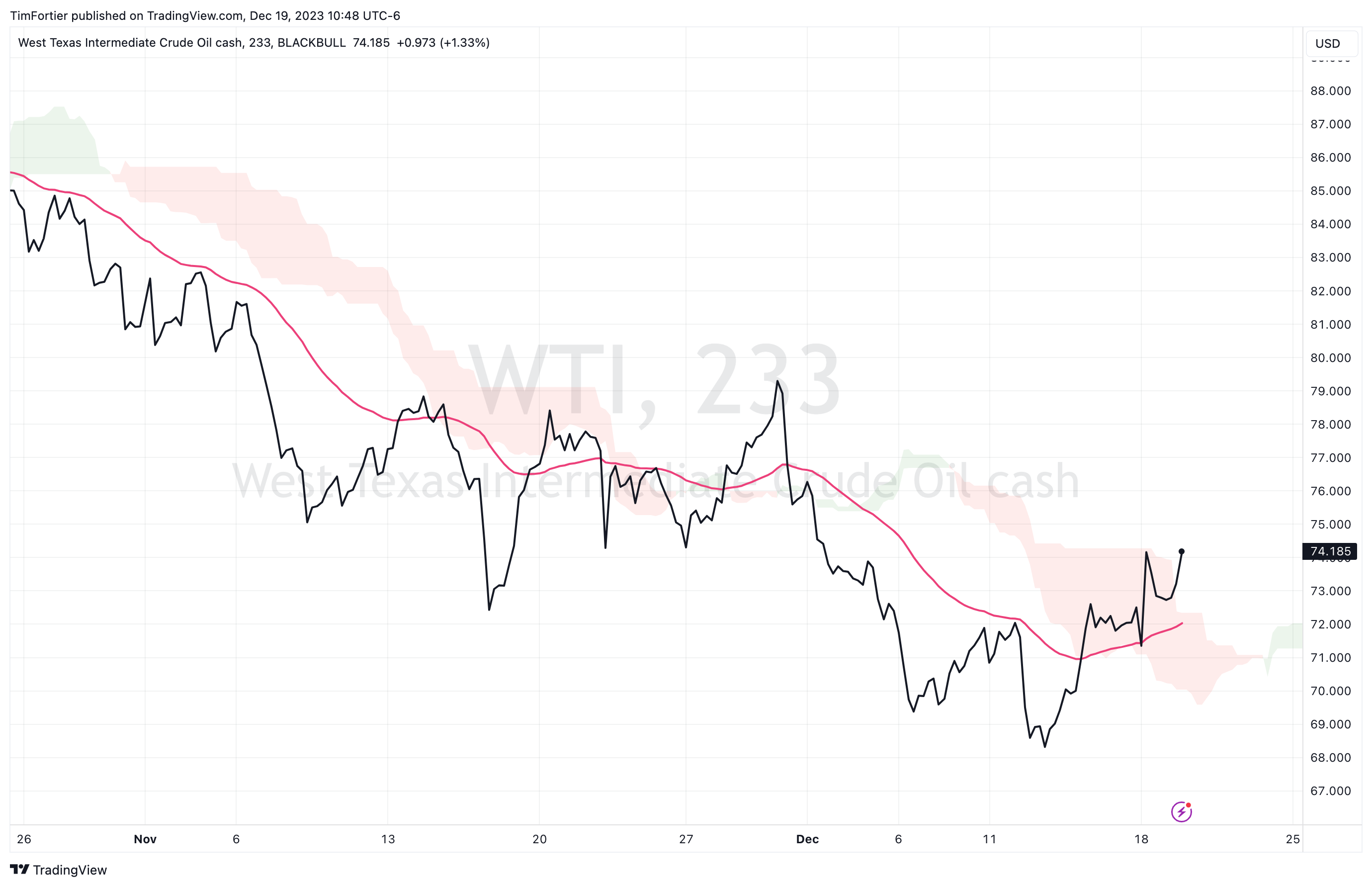Related Blogs
December 19, 2023 | Avalon Team
The CBOE Volatility Index, otherwise known as “VIX,” is a measure of anticipated movements in the S&P 500, derived from the current traded prices of S&P 500 options.
Known as Wall Street’s “fear gauge,” the VIX is followed by a multitude of market participants, while its levels and trends have become part of the common language of market commentary.
The index is now at the lowest level since the pandemic started and represents an extreme level of complacency.
Some bears warn that the very low VIX forewarns of trouble ahead.
In one sense, they are correct.
A spike in the VIX from very low levels, as we have today, ultimately precedes steep declines in the markets.
While this has been true, I would caution investors to rely solely upon the VIX alone.
The VIX simply defines the current market condition, but it can stay low for periods before returning to a more elevated level.
Currently driving the low volatility has been the Fed pivot and drop in interest rates along with an economy that has, so far, resisted all predictions of an imminent recession.
This has resulted in a chorus of those expecting a “soft landing” and thus the current complacency.
Any data that might challenge this narrative could cause the VIX to spike.
One thing that is for certain is that the market hates uncertainty.
Geopolitical event risks are always present and one of the current news items to watch are the recent attacks by Yemen’s Iran-backed Houthi rebels strikes on ships in the Red Sea, which they say are revenge against Israel for its military campaign in Gaza.
The Suez Canal is the quickest sea route between Asia and Europe and is particularly important in the transportation of oil and liquefied natural gas (LNG).
About nine million barrels of oil per day were shipped through the Suez Canal.
In an effort to avoid attacks, ships must now navigate around South Africa, increasing both the costs and the time of shipments.
Globally, oil prices have started to increase in recent days as this chart displays.
As falling energy prices were one of the bright spots in the most recent CPI report, offsetting gains in housing rents and food, any disruption in energy that sends prices higher may increase inflation and lessen the chance of the Fed reducing rates.
For now, market breadth measures remain positive and investors are not actively hedging their portfolios.
But for investors who may be concerned about a market pullback, the current low implied volatility provides a good environment to buy cheap portfolio insurance.
If you have any questions or have been considering hiring an advisor, then schedule a free consultation with one of our advisors today. There’s no risk or obligation—let's just talk.
Tags

Free Guide: How to Find the Best Advisor for You
Get our absolutely free guide that covers different types of advisory services you'll encounter, differences between RIAs and broker-dealers, questions you’ll want to ask when interviewing advisors, and data any good financial advisor should know about you and your portfolio.



